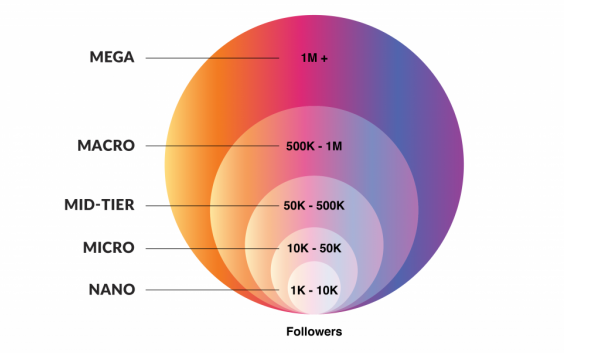
When you’re starting an online brand, using social media influencers is one way of gaining customer trust. You can’t offer a taste of your spice mix or let people pick up your cook-pots in their hands, but you can let an influencer do that and make a video about it. Because the big influencers have great relationships with their followers, if they recommend your product, customers will believe them.
But, and for a small business it’s a big but, the big social media influencers are quite expensive. Some of the mega vloggers are well known – they might be big name chefs, stand-ups, or make-up artists for instance – and they’re not going to look at your product for free.
Look down the scale, though, and there are what we might call micro and nano influencers. Micro influencers will concentrate on a specific niche, such as products for dog owners, or gourmet whiskeys. Nano influencers are even smaller, with tiny audiences – fewer than 1,000 followers, against a million or more for the big guys.
The advantage? It’s not just that they’re cheaper. They also have a really great relationship with their followers. Many of their followers will probably know them personally; for instance, someone who is a historical re-enactor and blogs about medieval life will probably know many of his or her followers from Renaissance Fayres, workshops, or other events. People who do green woodworking or patchwork quilting will often have met others at craft workshops.
To get in touch with these people, you need a personal approach. They want to know who you are, what your values are, and only after that, what you’re selling. Make sure you know exactly why they should be interested in your product. (That’s not always obvious. For instance, a big pain point for many professionals in re-enactment is the fact that they’re often traveling to big events. A virtual office service that can market their services while they’re at events could be really useful to them.)
A big pain point with cat owners is that their cats refuse to play with the toys they’ve bought for them. Again, whether you’ve got a catnip spray that will make any toy irresistible, or an irresistible toy, you know the pain point. You might end up donating a few samples to a cat refuge or adoption service – great news if the refuge owner blogs or does ‘cute cat’ videos. You might also find veterinarians who offer animal welfare advice on Youtube.
By the way, if your product happens to be really high strength gauntlets, this vet (https://www.youtube.com/watch?v=96Fw6H0ZG84) wants to know!
Always be on the lookout for particular problems identified by influencers. For instance, we spotted a Korean chef in the US complaining that it’s real difficult to get the right kind of chili for Korean cooking, and a dog walker saying she was fed up with extensible leashes that broke or didn’t give proper control. If you sold condiments or leases this would be your chance!
Now this does take a lot of time, compared with pressing the button on an Amazon PPC campaign or doing a single deal with a mega-influencer. The best way of building up your coverage is perhaps to start with just finding one blogger or Youtuber a week that you’d like to connect with. You’ll be surprised how quickly you can build your coverage. Just make sure you don’t lose touch with your existing contacts!
